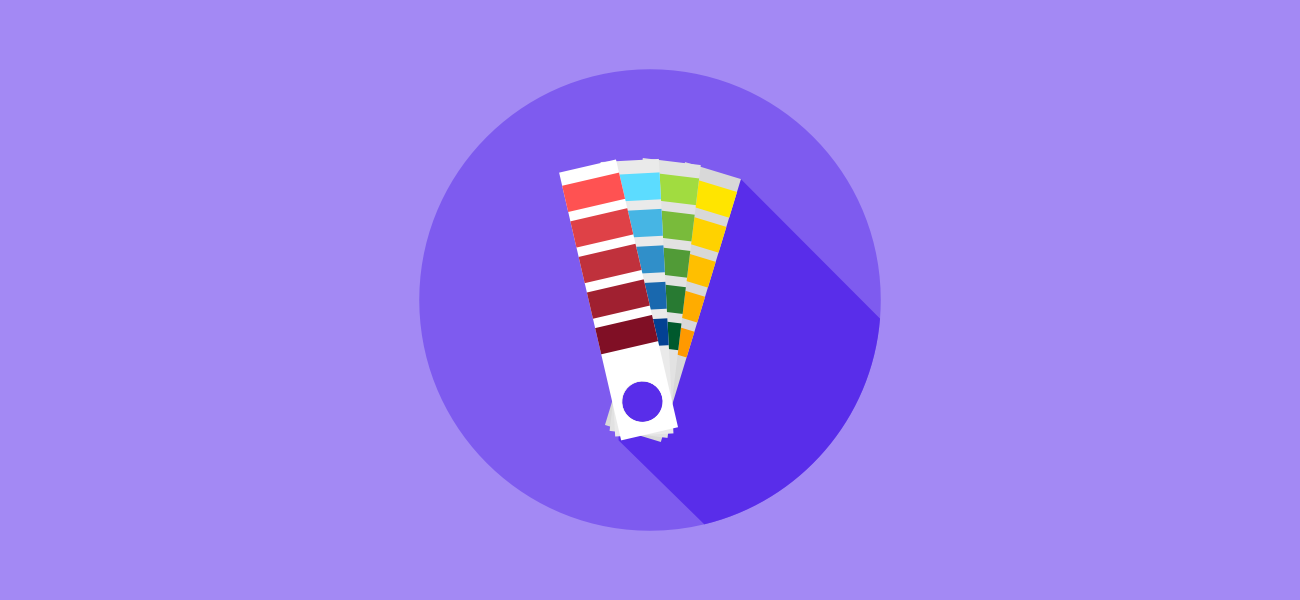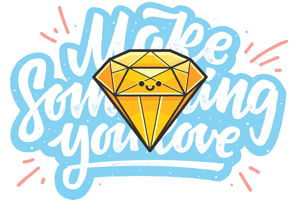In this article I’m going to tell the story of Color Hunt, a curated collection of color palettes. I started Color Hunt with the goal of sharing my passion for colors, and provide a go-to resource for designers, artists, developers, illustrators, and basically anyone who needs a fresh color combination for their design project.
The Idea
It all started from a repeating situation of me being asked by someone to help with choosing colors for their work. Friends of mine which are content creators or work in the creative field, were sending me messages once in a while that go like “Hey Gal, can you help me choose 5 colors for a pie-chart I’m making?” or a request like “Can you advise 3 colors that work with purple?”
After too many distracting and context-switching requests, I came up with the idea of setting up a simple web page, that features several basic color combinations I made. I thought that by doing that, I can easily send a link to my friends and direct them instantly to pick a color palette I made before. So I started coding it.
The Vision
I’m not a professional web developer nor an experienced marketeer, but I know how to combine colors. I started by making a simple HTML page that lists some color palettes I created, and connected it to a database where I store all the palettes. To let myself quickly add more palettes to the database, I developed a simple Palette Creator.
I set some rules such as limiting the amount of colors in each palette to four, and displaying the colors in each palette with a specific hierarchy I came up with. A ratio that gives each color a different importance by displaying it in a different size.
After getting this simple web page ready, I decided to transform this personal collection into a public resource for the world. Then came the two following ideas: A) the like button that lets users save their favorite palettes, and B) the sorting menu that lets users change the order of the listed palettes based on their popularity, their age, or just random.
I wanted to make a resource that feels alive, dynamic, and interactive. By showing the colors HEX codes on a mouse over I created a way to access the codes quickly without needing to click and navigate to a different page, and also, kept the layout clean and appealing.
The Challenges
1. Scaling The Collection
I wanted to grow Color Hunt to have thousands of palettes, but I couldn’t create so many by myself. My time is limited since I’m a full-time designer in a startup, and even on the creative aspect, I can’t come up with so many different color combinations. So I decided to make the Palette Creator public. Anyone who wants can contribute to the collection and submit their own color palette to Color Hunt.
2. Keeping The Quality
More palettes created by users = lower quality and less-curated collection. Color Hunt’s idea was to be a hand-picked collection on one hand, but also to be open and collaborative on the other hand. So I built the Review System. Instead of immediately showing every new palette on the homepage, all new palettes are sent to a managing dashboard I built. In that way I can review each and every creation before it goes public and choose the very best of these to show on Color Hunt’s homepage.
3. Driving Engagement
Since I wanted Color Hunt to be curated not only by me, either by the users themselves, I added the like button for each palette so the users could curate the collection themselves by clicking the button on the palettes they find beautiful.
But I knew that in order to run a likes system, I have to force my users to signup for the website, or connect using Facebook or Twitter, and I didn’t want to do that. I know that people hate signups and that I might get way less likes if only signed-up users could click the button. Since the community wasn’t big at the beginning, I couldn’t compromise on such low amounts of like.
Enter Local Storage. So I built a likes system that stores all the user’s liked palettes in his browser’s Local Storage without needing to have a user account on Color Hunt. My database also records each like with the user’s IP address so he can’t like a certain palette more than once.
4. Being Unique
There are tens of great color palettes websites online. I can’t win the competition and get all this huge audience to my side, but what I can do is to optimize the things that make Color Hunt different. Things such as the simplicity and the clean interface, the easy palette saving and quick accessing, the daily updating, and the hand-picked curation.
The Result
When everything was live, ready and tested, I published Color Hunt as a new product on Product Hunt and got an overwhelming amount of up-votes, exposure, feedback, and traffic. I started to see the palettes like-counters pumping, and my managing dashboard filling up with new palettes created by users.
Color Hunt got featured in many different websites, blogs, social networks and magazines related to design. After the first week I started to have so many new palette creations on a daily basis so I didn’t need to create any by myself anymore. Since then, all new palettes are created by the users themselves.
After the first month, I found myself wasting a lot of time curating and reviewing new palettes every day. So many palettes, that I even decided to hide the “Create” button under a dropdown menu to reduce the amount of submissions I need to review.
Today, Color Hunt is a popular resource that serves around 20,000 daily users from the design and the creative fields. Several months ago I launched the mailing list that currently has more than 3,000 subscribers that get a popular palette once a week directly to their inbox.
Choosing the best palette every day has become a daily routine for me, I enjoy maintaining and curating the website, and I even started to earn a small passive income from Color Hunt that lets me have a cocktail and eat some good food in a fancy restaurant once a week.
Whats Next?
I’ve been receiving lots of ideas and feature requests by users of Color Hunt from all over the world. There are still many things that can be done to make Color Hunt better. Many things, including:
- Adding a search option for users to find specific color palettes based on a certain color
- Developing a lists system for users to categorize their liked palettes and make different personal collections
- Open the collection with an API to give access to the palettes in different apps and websites
- Developing a Sketch plugin to let designers integrate and quickly use Color Hunt’s palette within the Sketch app
There are many more, and I always love to hear new suggestions. So if you’re a Color Hunt user, or either heard about it for the first time just now, please let me know if you have any idea or suggestion!
This article was originally published on Gal's Medium page.








